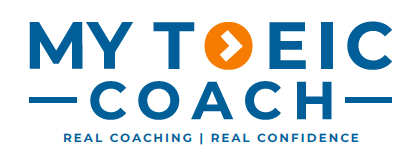🧩 You’ve Studied. You’ve Practiced. But the Score Doesn’t Move.
Stuck in a score plateau despite studying hard for TOEIC Listening? It’s because the test isn’t measuring what you think it is. Discover two powerful ALT strategies—Reaction Cue Loops and Distraction Interruption Drills—to retrain your brain for high-pressure performance.
You’ve listened to countless practice audios.
You’ve taken mock tests.
You’ve reviewed scripts and checked vocabulary.
But your score stays the same.
This isn’t because you’re not trying.
It’s because TOEIC isn’t testing what you think it’s testing.
TOEIC Listening doesn’t measure how much English you know.
It measures how fast you can make decisions under pressure —
with incomplete information, in real time.
If you’re preparing like a “student” — reviewing content, memorizing patterns —
you’re stuck in a loop that TOEIC doesn’t reward.
Test-takers train differently.
They build reaction habits.
They simulate pressure.
They train their brain to execute decisions — not absorb more knowledge.
That’s where ALT comes in.
🎧 ALT Strategy (Beginner–Intermediate): Reaction Cue Loops
This exercise sharpens your brain’s ability to lock onto the right information fast — and ignore the noise.
✅ What to do:
Choose a Part 3 or Part 4 audio clip.
Before playing, scan the questions and predict:
What “cue words” will trigger the answer? (time, location, intention)
Play the clip and mentally tap your finger each time you hear a possible cue.
After answering, replay and check — did you react to the right cues? Or get distracted by irrelevant details?
✅ Why it works:
Builds selective listening reflexes
Trains your brain to filter out unnecessary information
Mimics the time pressure you face in the test room
🔼 How to level up:
Increase speed (1.2x playback)
Reduce preview time for questions (simulate rushing)
Track how often you react to false cues (self-awareness training)
🔍 ALT Strategy (Advanced): Distraction Interruption Drills
Most people practice in quiet environments. But TOEIC Listening isn’t quiet.
It’s fast, packed, and mentally draining.
This drill trains you to recover focus instantly when your mind drifts.
✅ What to do:
Play a 5–7 minute Part 3 & 4 audio set
Set an external distraction (TV on mute, random background noise, slight physical discomfort like standing)
Each time you notice your mind drifting — immediately vocalize “Back” and force your focus back to the current speaker.
Post-drill, review where your mind drifted most often — pattern recognition.
✅ Why it works:
Trains focus recovery muscles under real test conditions
Conditions you to self-correct, not passively zone out
Increases mental stamina for the final 10 minutes of the test
🔼 How to level up:
Add light physical movements (walking in place)
Use faster, accent-varied audio
Shorten reaction correction time (“Back” + instant re-engagement)
💬 Final Thought
If studying alone was enough, you’d already have your target score.
But TOEIC Listening is not a study subject.
It’s a reaction performance.
ALT is not about teaching you more English.
It’s about retraining how you listen, filter, decide, and recover — under time pressure.
Test-takers don’t need perfect understanding.
They need trained reflexes that deliver points — every time.
You don’t need more materials.
You need smarter repetitions, built around the way TOEIC actually tests you.
ALT gives you that path.
Want to Learn More?
Our blog is full of practical strategies that help test-takers like you build better habits, overcome common blocks, and improve TOEIC scores through smarter, easier methods. Try our free TOEIC Block quiz now!

